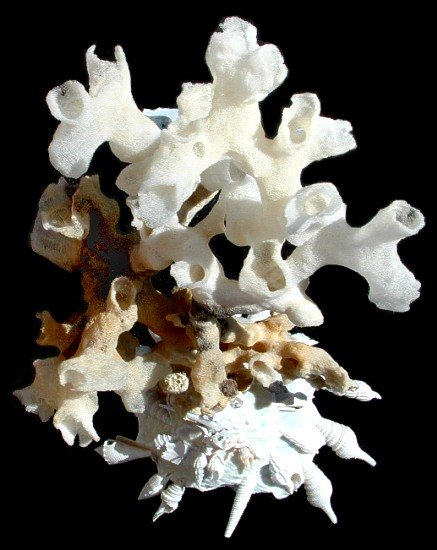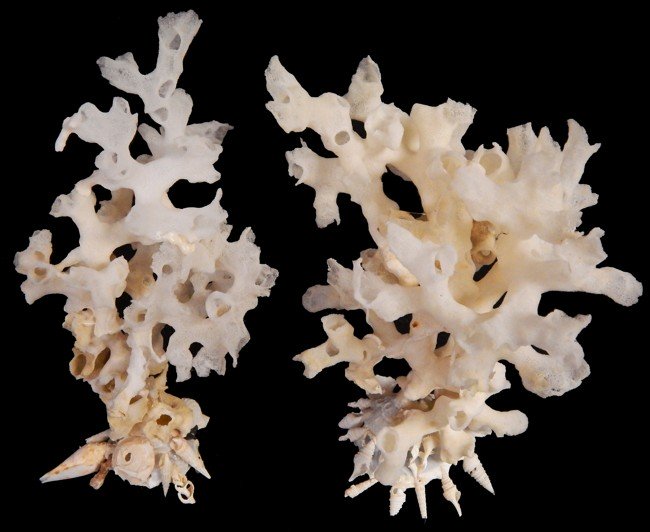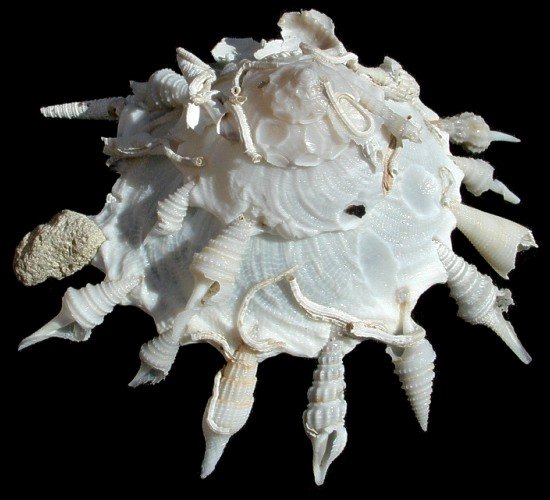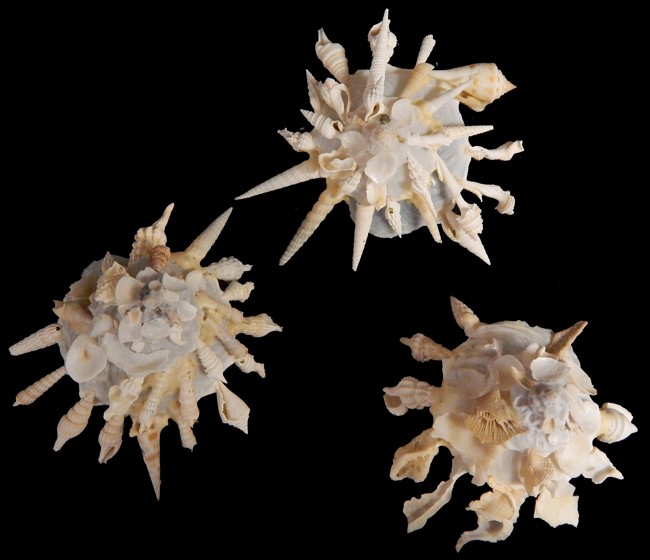As the site is updated, each listing includes the shipping cost. Some listings which I have not updated still give you calculated shipping costs based on weight and size of package. (In the sections I have updated) If you select several different listings, we will consolidate your order and charge you the actual cost of the entire package. The shipping over charge will be refunded to you, when your order is shipped.
XENOPHORIDAE/ CARRIER SHELLS


Xenophoridae common name carrier shells.
Xenophoridae is a family of medium-sized to large sea snails, marine gastropod mollusks in the clade Littorinimorpha.
According to the taxonomy of the Gastropoda by Bouchet & Rocroi (2005) the family Xenophoridae has no subfamilies.
The Xenophorids live on sand and mud bottoms of the continental shelves and the continental slopes of the subtropical and tropical seas, ranging from very shallow water to depths of nearly 4600 feet.
(REF: Kreipl, K. & Alf, A. (1999): Recent Xenophoridae)
Many Xenophorids cements small stones or shells to the edge of its shell as it grows, thus the shells of those species are sometimes referred to as "a shell-collecting shells". The genus name Xenophora comes from two ancient Greek words and means "bearing (or carrying) foreigners". The shells are small to rather large (diameter of base without attachments on average ranges from 3/4 to 6 1/3 inches; while the height of shell ranges a little more than 3/4 to 4 inches), depressed to conical, with narrow to wide, simple to spinose peripheral edge or flange separating spire from base. The Aperture is large, base broad & rather flattened, often umbilicate. Periostracum very thin or wanting. Protoconch depressed-conical, multispiral (in one species paucispiral). Teleoconch usually with foreign objects attached in spiral series to peripheral flange and, sometimes, remainder of dorsum, at least on early whorls. Operculum is horny, yellowish to brown, nucleus lateral, with simple growth lamellae, sometimes with conspicuous radial striae or hollow radial ribs.
The aperture is an opening in certain kinds of mollusk shells: it is the main opening of the shell, where the head-foot part of the body of the animal emerges for locomotion, feeding, etc.
The umbilicus of a shell is the axially aligned, hollow cone-shaped space within the whorls of a coiled mollusk shell.
The periostracum is a thin, organic coating (or "skin") that is the outermost layer of the shell of many shelled animals, including mollusk and brachiopods.
A protoconch (meaning first or earliest or original shell) is an embryonic or larval shell which occurs in some classes of mollusks, e.g., the initial chamber of an ammonite or the larval shell of a gastropod.
The operculum (from Latin operculum 'cover, covering'; opercula or operculums) is a corneous or calcareous (calcium carbonate) anatomical structure like a trapdoor.
(REF: Kreipl, K. & Alf, A. (1999): Recent Xenophoridae)
F1-4
A Carrier Shell accompanied by a coral specimen, measuring between 6 and 8 inches in size. .....$31.55
F2-4
One Carrier Shell with coral specimen measuring 5 to 6 inches ...... $25.75


Xenophora pallidula
Xenophora pallidula are species of the sea snail, a marine gastropod mollusk in the family Xenophoridae, the carrier shells.
Xenophora pallidula, also known as the Pallid Carrier Shells, are relatively small, averaging about 2 1/2 to 3 inches in length and 2 3/4 to 3 1/4 inches in width. These snails have a light appearance, usually white or off-white in color. They get their name from the Latin word, Xenophoridae which means “foreign carrying”. These species will attach objects like coral skeletons, fragmented shells, and other debris to the dorsal side of their shell. These attachments often create a radial pattern around the whorls. While this is common among the species in this family, the Xenophora pallidula are known to cover more of their shell than other species in the family, with over half their shell hidden. And as the organism grows, there will be more and larger foreign material attached. This is not energetically favorable as the snails secrete mucus, which acts as a glue to hold the material in position. Yet the layout of the shell is a source of protection in various ways. This unique shell makes it harder to put into a predator's mouth and swallow. Additionally, due to the type of objects glued to the shell, it serves as a method of camouflage as they lay within the sea floor debris. A spire is also attached to the shell of the snails which adds to its intricacy. Most have a fairly high spire, with a spire angle ranging between 65 and 92 degrees.
(REF: Xenophora pallidula (Reeve, 1842). WoRMS (2010). Xenophora (Xenophora) pallidula (Reeve, 1842). Accessed through: World Register of Marine Species) (REF: Bijoy Nandan, S.; Priyaja, P.; Jayachandran, P.R. (2020). Frontiers in Benthic Science. Kochi, India: Directorate of Public Relations and Publications. ) (REF: Prem Anand, T.; Deepak Samuel, V.; Patterson Edward, J.K. (2001). "Gastropod shells attach to the surface of Xenophora pallidula (Gastropoda, Prosobranchia)")
Xenophora pallidula are found in tropical areas across the Indo-Pacific ocean area. They are also found in or near Australia, India, Nicobar Islands, Indonesia, Japan, Philippines and some have been found near South Africa. In these areas, the Xenophora pallidula dwell in shallower waters of the benthic zone. They are commonly found at depths of 656 feet to 1870 feet some have been found in depths of 3150 feet.
The benthic region of the ocean begins at the shore line (intertidal or littoral zone) and extends downward along the surface of the continental shelf out to sea. Thus, the region incorporates a great variety of physical conditions differing in: depth, light penetration and pressure. The continental shelf is a gently sloping benthic region that extends away from the land mass. At the continental shelf edge, usually about 660 feet deep, the gradient greatly increases and is known as the continental slope. The continental slope drops down to the deep sea floor. The deep-sea floor is called the abyssal plain and is usually about 13,000 feet deep. The ocean floor is not all flat but has submarine ridges and deep ocean trenches known as the hadal zone.
(REF: Walag, Angelo (2022). "Understanding the world of Benthos: an introduction to Benthology". In Godson, Prince; et al. (eds.). Ecology and Biodiversity of Benthos. Amsterdam, Netherlands: Elsevier)(REF: Xenophora pallidula (Reeve, 1842). WoRMS (2010). Xenophora (Xenophora) pallidula (Reeve, 1842). Accessed through: World Register of Marine Species ) (REF: Bijoy Nandan, S.; Priyaja, P.; Jayachandran, P.R. (2020). Frontiers in Benthic Science. Kochi, India: Directorate of Public Relations and Publications ) (REF:"Xenophora pallidula, Pallid carrier-shell". www.sealifebase.ca. )
The Pallid Carrier shells are grazers that feed upon detritus from the sea floor. The snails mobility enables them to acquire food. These Carrier shells reproduce sexually and externally but are not hermaphroditic. Instead they have individuals that identify with a distinct sex and have specific reproduction organs for the entirety of their lifespan. Once reproduction has begun, embryos develop into planktonic trochophore, which is a young larvae and then into the final larval stage before becoming fully grown adult carrier shells
detritus is loose material (such as rock fragments or organic particles) that results directly from disintegration.
hermaphroditic possessing both male and female reproductive organs, structures, or tissue.
(REF: www.merriam-webster.com )
(REF: Xenophora pallidula, Pallid carrier-shell" www.sealifebase.ca) (REF: Xenophora pallidula". www.mindat.org. Hudson Institute of Mineralogy. 1993)
Scientific classification
Kingdom: Animalia
Phylum: Mollusca
Class: Gastropoda
(unranked): clade Caenogastropoda
clade Hypsogastropoda
clade Littorinimorpha
Superfamily: Xenophoroidea
Family: Xenophoridae
Genus: Xenophora
Subgenus: Xenophora
Species: X. pallidula
Binomial name: Xenophora pallidula
(Reeve, 1842)
(REF: Xenophora pallidula (Reeve, 1842). WoRMS (2010). Xenophora (Xenophora) pallidula (Reeve, 1842). Accessed through: World Register of Marine Species )
E1-4
Two Carrier shells (Pallid Carrier) measuring approximately 4 inches ......$11.39